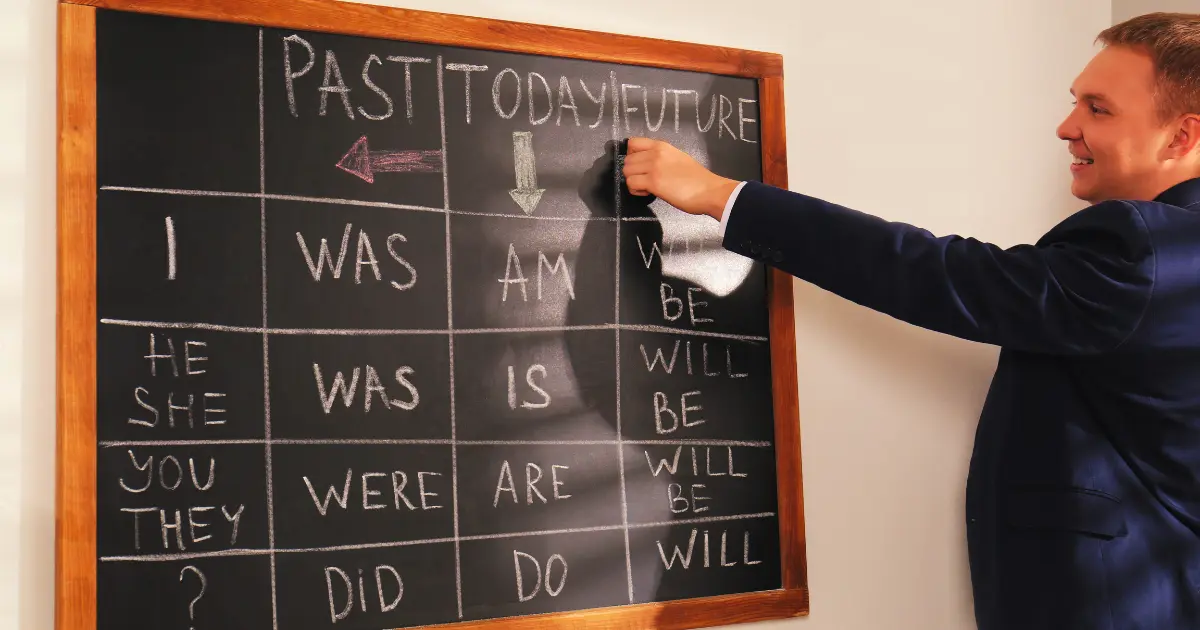Tenses are the backbone of effective communication in English grammar. They form the framework for expressing thoughts, actions, and events with time. Among these, the past continuous tense plays a vital role in narrating and describing ongoing past events. This blog will provide an understanding of tenses through a detailed analysis of the sentence, “The child cried for milk,” while exploring the past continuous tense in depth.
Introdution to Tenses
In any language, tenses play an important role as they describe an action in relation to time. It helps in constructing sentences to give details and accuracy in a language.
Overview of Tenses
There are three main categories of tenses in English grammar, and they each have variations within them:
- Past Tenses describe actions that have already happened.
- Present Tenses refer to actions happening now or actions that regularly occur.
- Future Tenses predict actions that will happen later.
Why are tenses important? Without them, communicating when, how, or even why something occurred can become confusing. Imagine trying to describe your weekend without specifying whether an event is over or still ongoing—our conversations would become ambiguous!
Breaking Down the Sentence: “The Child Cried for Milk”
Understanding the Sentence Context
“The child cried for milk” is a simple sentence that narrates a completed action. It represents a clear picture—a child expressing a need (crying) in the past.
Analyzing the Verb Form
The phrase “Cried” is a past form of the verb ‘Cry’. The sentence follows the subject-verb-object and past-action verbs that describe things that happened in past events and do not indicate the continuity of the action.
Past Continuous Tense
Definition and Usage
The past continuous tense states the actions while they are happening in the past. It focuses on the continuity of the action rather than its completion. For example:
- “I was reading a book.”
- “They were playing football.”
These examples highlight ongoing actions during a past timeframe.
Key Characteristics of the Tense
- Always formed with was/were + verb-ing.
- Frequently highlights background actions when paired with the past simple.
Analyzing “The Child Cried for Milk”
Why Is It Past Simple?
The sentence, “The child cried for milk,” describes the completion of action in the past, and does not show the progress in the past.
Revising the Sentence in the Past Continuous
To transform the sentence into the past continuous tense:
- Original sentence (past simple): “The child cried for milk.”
- Revised sentence (past continuous): “The child was crying for milk.”
Contextual Usage of Past Continuous
The revised sentence adds depth, indicating that the child’s crying was ongoing or interrupted by another action.
How to Form the Past Continuous Tense
Sentence Structure
The formula is straightforward:
- Subject + was/were + verb-ing.
For example:
- “I was reading.”
- “They were singing.”
Usual Mistakes
- Incorrect form of verb (e.g., “was cry” instead of “was crying”).
- Forgetting the helping verbs “was/were.”
Why Use the Past Continuous Tense?
The past continuous tense is essential in the following situations:
- Describing simultaneous past actions.
- Setting the scene in storytelling.
- Expressing interrupted past actions.
Each adds dimension to stories, making them more engaging and descriptive.
FAQs
Differentiate between simple past and past continuous?
Simple Past denotes completed actions, whereas past continuous describes actions in the past while in progress.
Can I use “was” with plural subjects?
No, use “were” for plural subjects, like “They were studying.”
What are some common time markers for past continuous?
Markers like “while,” “when,” and specific times (e.g., “at 6 PM”) are common with past continuous.
Building Grammar Skills with Past Continuous
Look for opportunities to practice converting simple past sentences into past continuous ones. Create detailed stories using examples like “The child cried for milk” expanded into a rich narrative with multiple actions.
Tense Timelines for Visual Learning
Visualizing tenses can clarify usage. For example, place a sentence on a timeline to see when the action started and ended. Mark the continuity of the action in the past continuous to identify its prolonged nature.
Conclusion: Revisiting “The Child Cried for Milk”
By now, you’ve analyzed how the sentence changes depending on the tense, particularly the depth and detail added by the past continuous. Grammar is about context and understanding tenses empowers clearer, more impactful communication.


